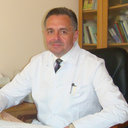[Invasive mycoses during hematopoietic stem cell transplantation].
Nyckelord
Abstrakt
OBJECTIVE
To define the frequency, etiology, and risk factors of invasive mycoses (IM) in patients with allogeneic (allo) and autologous (auto) hematopoietic stem cell transplantation (HSCT) and to evaluate the impact of IM on overall survival (OS).
METHODS
Data on 356 patients after allo-HSCT (n = 237) and auto-HSCT (n = 119) from 2000 to 2010 were analyzed. The diagnosis of IM was established according to the EORTC/MSG 2008 criteria.
RESULTS
The incidence of myocardial infarction (MI) was 19.1%; that was 23.2 and 10.9% in allo-HSCT and auto-HSCT recipients, respectively. The incidence of MI following allo-HSCT was significantly higher than that after auto-HSCT. Aspergillus spp. (82.3%), Candida spp. (11.8%), zygomycetes (Mucor spp., Rhizopus spp.) (4.4%), and Cryptococcus neoformans (1.5%) are involved in the etiology of MI. Its risk factors are acute lymphoblastic leukemia; non-myeloablative conditioning regimen; use of fludarabine and antilymphocyte globulin; peripheral blood stem cells as a source for grafting; long-term lymphopenia, neutropenia; use of granulocyte colony-stimulating factor (G-CSF); acute graft-versus-host reaction; grade 3-4 mucositis; infections, such as cytomegalovirus, sepsis. The development of MI in HSCT recipients did not significantly reduce one-year OS after allo-HSCT and auto-HSCT--53.6 and 55% and 86.7 and 90.3% (with and without MI, respectively). In patients with invasive aspergillosis, OS (12 weeks after IM being diagnosed) was significantly longer in those with other invasive mycoses (91.3 and 50%, respectively).
CONCLUSIONS
The incidence of MI after allo-HSCT was higher than that after auto-HSCT. MI induced by the fungal genus Aspergillus spp. was most common. Along with known risk factors, there was a poor prognostic factor, such as G-CSF. The development of MI failed to affect one-year OS, which was indicative of the adequate quality of its early diagnosis and therapy. The prognosis was poor in patients with invasive candidiasis, zygomycosis, and cryptococcosis. Investigations need to be continued to specify the reasons for high morbidity rates and the factors provoking discussion by investigators worldwide.



